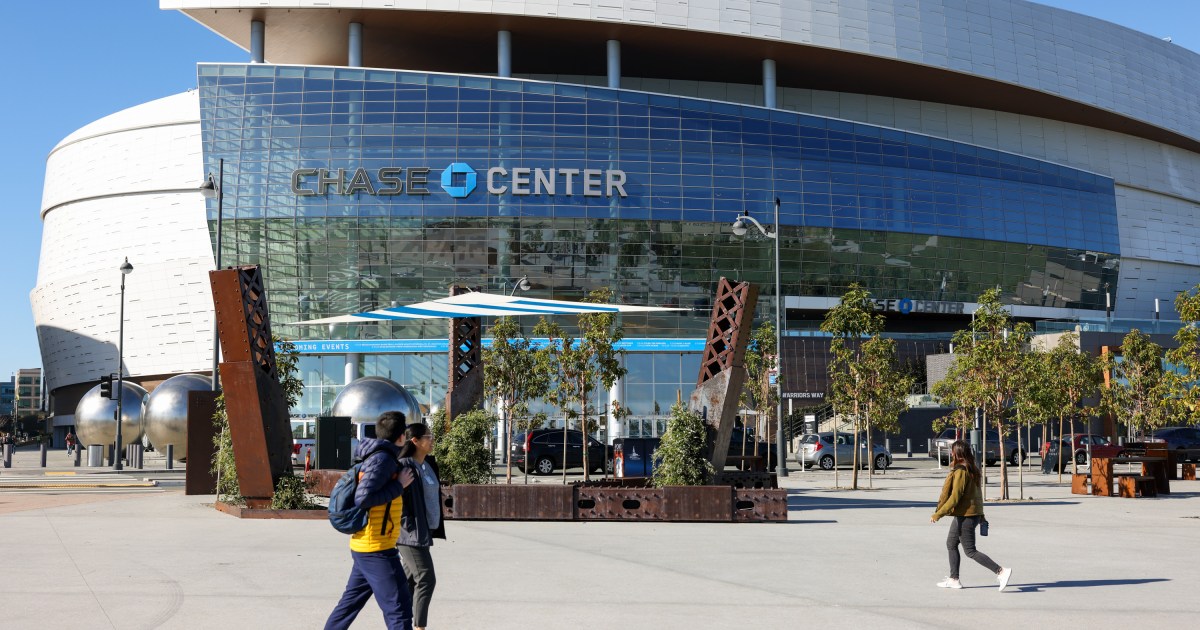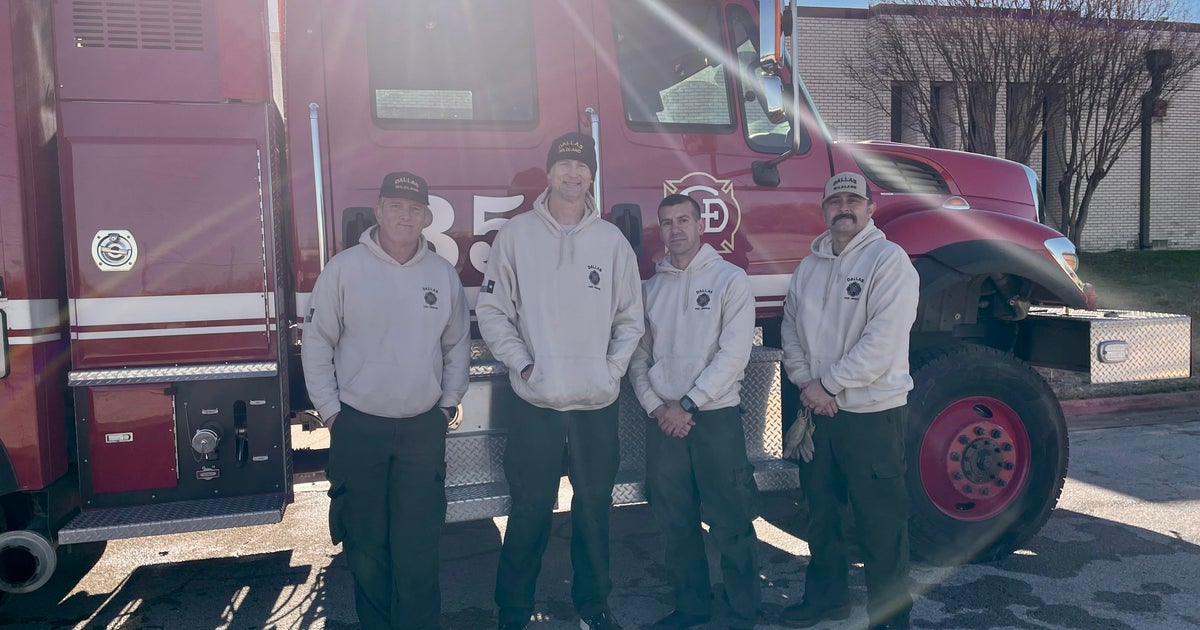Business
Column: The UAW sends a lightning bolt into anti-union states with a huge victory at a VW plant
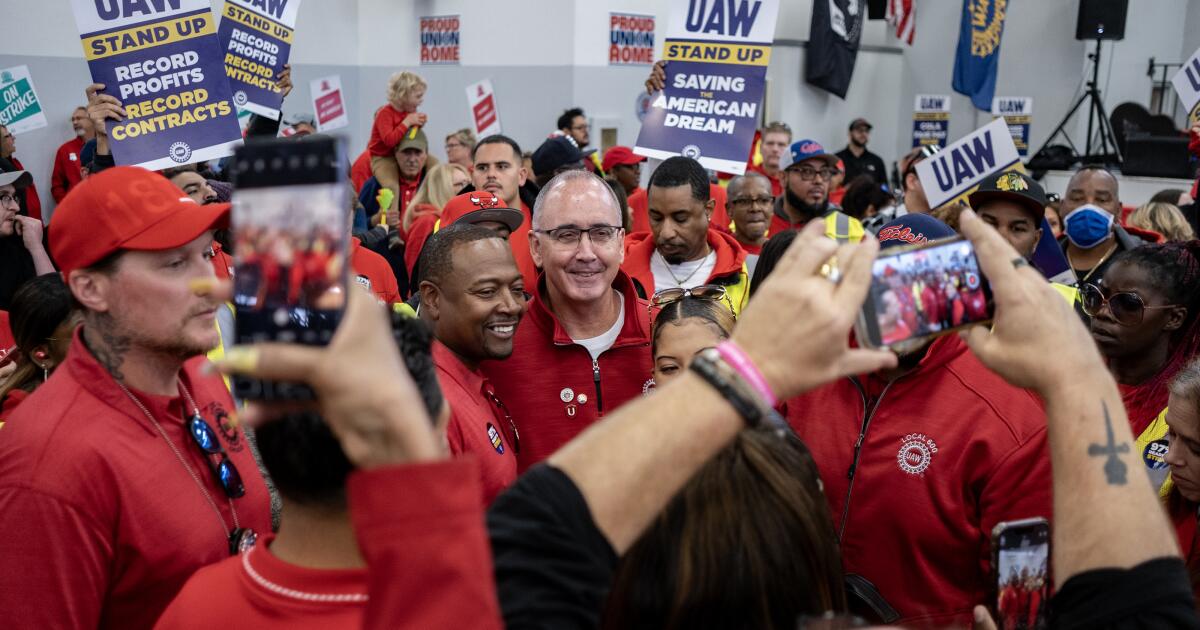
Until Friday, the phrase “union victory at Chattanooga” could mean only one thing: the defeat of a Confederate army by forces under U.S. Grant at the Battle of Chattanooga in late November 1863.
No longer. On Friday, the United Auto Workers scored a decisive victory at a Volkswagen plant in Chattanooga, Tenn., as workers voted overwhelmingly to organize with the UAW.
The vote looks like a milestone. It was the UAW’s first victory at an auto plant in the Deep South, following two defeats — in 2014 and 2019 — at the same plant. It comes on the heels of the UAW’s success in negotiating impressive new contracts with the Big Three domestic automakers in October.
The real importance of this election is not just the organizing of this factory. It’s that it announces the South is open to unions.
— Labor historian Erik Loomis
The vote opens the door to further votes and organizing drives across the region, where political leaders have kept unions weak in part through anti-union right-to-work laws — all 14 Deep South states, as well as 12 others, have those laws. Next on the schedule is a vote by 5,000 workers at a Mercedes plant in Alabama, scheduled to take place May 13-17.
“The real importance of this election is not just the organizing of this factory,” says labor historian Erik Loomis. “It’s that it announces the South is open to unions…. This has been the greatest struggle for the American labor movement for more than a century. A serious breakthrough in the South is now possible.”
The vote also represents a strong rebuke to the GOP political establishment in the South. Indeed, it turns the history of regional auto worker organizing on its head. In 2014, it may be remembered, Tennessee’s GOP establishment pulled out the stops to discourage workers at the Chattanooga plant from organizing with the UAW.
VW was willing to accept unionization, with an eye toward replicating the labor-management “works councils” common among manufacturing companies at its home in Germany. (“Volkswagen considers its corporate culture of works councils a competitive advantage,” a member of VW’s board had told the Associated Press.)
In response, then-Gov. Bill Haslam threatened the company with retribution, declaring that Tennessee would withdraw incentives for Volkswagen if the UAW was voted in.
Then-GOP Sen. Bob Corker, a former Chattanooga mayor, flew down from Washington to voice an almost certainly specious claim that VW executives had “assured” him that the company would open a new SUV manufacturing line at the plant — if the workers turned the UAW down. A local VW executive disputed that.
With shocking cynicism, Corker co-opted the language of political resistance to discourage workers from voting in the union, stating that if the UAW won the vote, “it’s going to be something we can overcome — we will overcome.”
I marveled at the time that the ghost of Pete Seeger, who had turned a couple of traditional gospel songs into the civil rights anthem “We Shall Overcome,” didn’t rise from the grave and impale Corker on a lightning bolt.
Corker also perverted another protest slogan into an attack on workers by declaring, “the whole world is watching.”
The 2014 organizing campaign failed on a 626-712 vote. After the UAW filed a protest with the National Labor Relations Board over the interference by Haslam, Corker and their cronies, the 2019 revote was held. It was another defeat for the union, but narrower, with 48% of the votes in favor, compared with 46% in 2014.
This time around, the vote was 2,628 in favor versus 985 against — a 72.7% majority.
Early signs that the Chattanooga workers would vote to unionize didn’t stop GOP politicians from trying to place their thumbs on the scale. In a joint statement issued the day before voting began, Tennessee’s current GOP governor, Bill Lee, and the governors of Alabama, Mississippi, Georgia, South Carolina and Texas decried what they hypocritically called “the unionization campaign driven by misinformation and scare tactics that the UAW has brought into our states.”
The governors noted that all three automakers that signed the October contracts with the UAW had announced layoffs since then. That’s true, but it was a lie to ascribe the layoffs to the union contracts: In each case, the companies linked them to an unexpected slowdown in the market for electric vehicles.
What the governors didn’t mention — an inadvertent oversight, you can be sure — several of the non-union foreign automakers with plants in the South, such as Mercedes, Tesla and BMW, all of which are being targeted by the UAW, have also announced layoffs.
Perhaps more to the point, in the wake of the Big Three contract settlements, Toyota, Honda, Nissan and Subaru all announced raises of as much as 11% for their workers — plainly a demonstration that higher pay at unionized companies ripples into the nonunion sector of an industry. All those companies except Subaru have plants in states represented by the governors who issued the statement; Subaru’s only U.S. plant is in Lafayette, Ind.
“In America,” the governors wrote, “we respect our workforce and we do not need to pay a third party to tell us who can pick up a box or flip a switch.” They added, “when employees have a direct relationship with their employers, that makes for a more positive working environment. They can advocate for themselves and what is important to them without outside influence.”
Students of anti-union rhetoric will recognize this spiel as drawn directly from the playbook of intransigently anti-union employers such as Starbucks, including the assertions that union representation is inimical to the smooth operation of a workplace and that unions interfere with the employee-employer relationship.
As almost any experienced worker knows, “direct contact” between the rank-and-file and management almost never works out to the advantage of the workers unless they have the leverage that comes from collective action. The governors’ claim that employees can successfully “advocate for themselves” is virtually pure myth.
The governors also may have failed to read the room, as the saying goes. “The demographics of the South are different than they were 10 years ago,” Loomis told me. “More Latinos and more people moving from the North has been transformational to the South generally — the shift of politics in Georgia due to the expansive growth of Atlanta is one example. Charlotte has become a massive destination for young Black professionals, for another. The South simply isn’t as different from the rest of the nation as it used to be.”
Nor should one overlook the distinct change in labor policies at the federal level. Joe Biden’s stature as possibly the most pro-labor president in American history has been widely noticed. He is the only president to walk a union picket line, as he did during the UAW contract negotiations; he has been sticking with Julie Su, his nominee as secretary of Labor against ferocious opposition from Big Business; and his National Labor Relations Board has fulfilled its role as a guardian of collective bargaining rights.
Whether NLRB oversight of the Chattanooga vote tamped down the company’s efforts to undermine the vote isn’t clear, but it couldn’t have hurt.
The UAW’s success in its contract negotiations may emerge as a powerful argument in favor of organizing at other auto plants. There may be some defeats in the South lurking on the horizon, but there may also be further successes.
It’s worth recalling what happened after Grant’s victory in Chattanooga in 1863. Following the nearly simultaneous Union victories of July 1863 at Vicksburg, Miss., and Gettysburg, Pa., Chattanooga tightened the noose on the Confederacy, opening the door to Sherman’s march to the sea in 1864 and the end of the Confederacy.
Last week’s vote in Chattanooga might, just might, be an equivalent turning point in the long war for worker rights and welfare.

Business
As Delta Reports Profits, Airlines Are Optimistic About 2025

This year just got started, but it is already shaping up nicely for U.S. airlines.
After several setbacks, the industry ended 2024 in a fairly strong position because of healthy demand for tickets and the ability of several airlines to control costs and raise fares, experts said. Barring any big problems, airlines — especially the largest ones — should enjoy a great year, analysts said.
“I think it’s going to be pretty blue skies,” said Tom Fitzgerald, an airline industry analyst for the investment bank TD Cowen.
In recent weeks, many major airlines upgraded forecasts for the all-important last three months of the year. And on Friday, Delta Air Lines said it collected more than $15.5 billion in revenue in the fourth quarter of 2024, a record.
“As we move into 2025, we expect strong demand for travel to continue,” Delta’s chief executive, Ed Bastian, said in a statement. That put the airline on track to “deliver the best financial year in Delta’s 100-year history,” he said.
The airline also beat analysts’ profit estimates and said it expected earnings per share, a measure of profitability, to rise more than 10 percent this year.
Delta’s upbeat report offers a preview of what are expected to be similarly rosy updates from other carriers that will report earnings in the next few weeks. That should come as welcome news to an industry that has been stifled by various challenges even as demand for travel has rocketed back after the pandemic.
“For the last five years, it’s felt like every bird in the sky was a black swan,” said Ravi Shanker, an analyst focused on airlines at Morgan Stanley. “But it appears that this industry does have its ducks in a row.”
That is, of course, if everything goes according to plan, which it rarely does. Geopolitics, terrorist attacks, air safety problems and, perhaps most important, an economic downturn could tank demand for travel. Rising costs, particularly for jet fuel, could erode profits. Or the industry could face problems like a supply chain disruption that limits availability of new planes or makes it harder to repair older ones.
Early last year, a panel blew off a Boeing 737 Max during an Alaska Airlines flight, resurfacing concerns about the safety of the manufacturer’s planes, which are used on most flights operated by U.S. airlines, according to Cirium, an aviation data firm.
The incident forced Boeing to slow production and delay deliveries of jets. That disrupted the plans of some airlines that had hoped to carry more passengers. And there was little airlines could do to adjust because the world’s largest jet manufacturer, Airbus, didn’t have the capacity to pick up the slack — both it and Boeing have long order backlogs. In addition, some Airbus planes were afflicted by an engine problem that has forced carriers to pull the jets out of service for inspections.
There was other tumult, too. Spirit Airlines filed for bankruptcy. A brief technology outage wreaked havoc on many airlines, disrupting travel and resulting in thousands of canceled flights in the heart of the busy summer season. And during the summer, smaller airlines flooded popular domestic routes with seats, squeezing profits during what is normally the most lucrative time of year.
But the industry’s financial position started improving when airlines reduced the number of flights and seats. While that was bad for travelers, it lifted fares and profits for airlines.
“You’re in a demand-over-supply imbalance, which gives the industry pricing power,” said Andrew Didora, an analyst at the Bank of America.
At the same time, airlines have been trying to improve their businesses. American Airlines overhauled a sales strategy that had frustrated corporate customers, helping it win back some travelers. Southwest Airlines made changes aimed at lowering costs and increasing profits after a push by the hedge fund Elliott Management. And JetBlue Airways unveiled a strategy with similar aims, after a less contentious battle with the investor Carl C. Icahn.
Those improvements and industry trends, along with the stabilization of fuel, labor and other costs, have created the conditions for what could be a banner 2025. “All of this is the best setup we’ve had in decades,” Mr. Shanker said.
That won’t materialize right away, though. Travel demand tends to be subdued in the winter. But business trips pick up somewhat, driven by events like this week’s Consumer Electronics Show in Las Vegas.
The positive outlook for 2025 is probably strongest for the largest U.S. airlines — Delta, United and American. All three are well positioned to take advantage of buoyant trends, including steadily rebounding business travel and customers who are eager to spend more on better seats and international flights.
But some smaller airlines may do well, too. JetBlue, Alaska Airlines and others have been adding more premium seats, which should help lift profits.
While he is optimistic overall, Mr. Shanker acknowledged that the industry was vulnerable to a host of potential problems.
“I mean, this time last year you were talking about doors falling off planes,” he said. “So who knows what might happen.”
Business
Insurance commissioner issues moratorium on home policy cancellations in fire zones
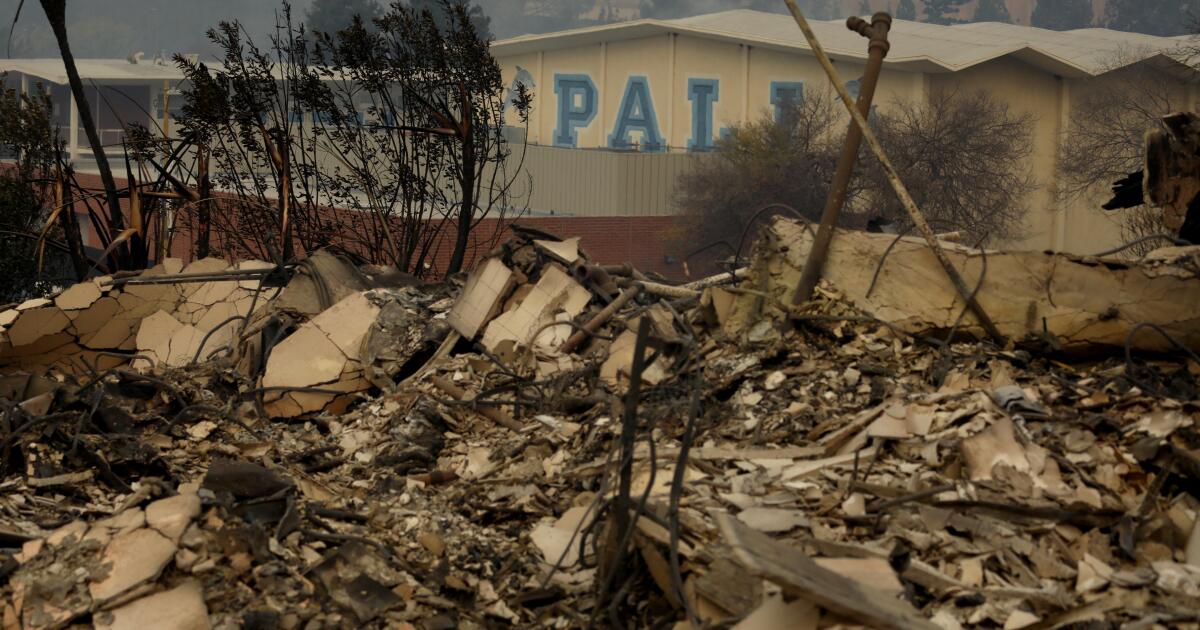
California Insurance Commissioner Ricardo Lara has issued a moratorium that bars insurers from canceling or non-renewing home policies in the Pacific Palisades and the San Gabriel Valley’s Eaton fire zones.
The moratorium, issued Thursday, protects homeowners living within the perimeter of the fire and in adjoining ZIP codes from losing their policies for one year, starting from when Gov. Gavin Newsom declared a state of emergency on Wednesday.
The moratoriums, provided for under state law, are typically issued after large fires and apply to all policyholders regardless of whether they have suffered a loss.
Lara also urged insurers to pause for six months any pending non-renewals or cancellations that were issued up to 90 days before Jan. 7 that were to take effect after the start of the fires — something he does not have authority to prohibit.
“I call upon all property insurance companies to halt these non-renewals and cancellations and provide essential stability for our communities, allowing consumers to focus on what’s important at the moment — their safety and recovery,” said Lara on Friday during a press conference in downtown Los Angeles.
Insurance companies in California have wide latitude to not renew home policies after they expire, though they must provide at least 75 days’ notice. However, policies in force can be canceled only for reasons such as non-payment and fraud.
Insurers have dropped hundreds of thousands of policyholders across California in recent years citing the increasing risk and severity of wind-driven wildfires attributed to climate change. The insurance department said residents living in fire zones can be subject to sudden non-renewals, prompting the need for the moratoriums.
In addition, Lara asked insurers to extend to policyholders affected by the fires time to pay their premiums that go beyond the existing 60-day grace period that is mandatory under state law.
It’s not clear how many homeowners in Pacific Palisades and elsewhere might not have had coverage, but many homeowners reported that insurers had not renewed their policies before the disaster struck. State Farm last year told the Department of Insurance it would not renew 1,626 policies in Pacific Palisades when they expired, starting last July.
Residents can visit the Department of Insurance website at insurance.ca.gov to see if their ZIP codes are included in the moratorium. They can also contact the department at (800) 927-4357 or via chat or email if they think their insurer is in violation of the law.
The Pacific Palisades fire, the most destructive fire in Los Angeles history, as of Friday morning had grown to more than 20,000 acres, burning more than 5,000 homes, businesses and other buildings. It was 6% contained.
The Eaton fire, which has burned many structures in Altadena and Pasadena, has spread to nearly 14,000 acres and was 3% contained as of early Friday. Ten people have died in the fires.
Business
In Los Angeles, Hotels Become a Refuge for Fire Evacuees

The lobby of Shutters on the Beach, the luxury oceanfront hotel in Santa Monica that is usually abuzz with tourists and entertainment professionals, had by Thursday transformed into a refuge for Los Angeles residents displaced by the raging wildfires that have ripped through thousands of acres and leveled entire neighborhoods to ash.
In the middle of one table sat something that has probably never been in the lobby of Shutters before: a portable plastic goldfish tank. “It’s my daughter’s,” said Kevin Fossee, 48. Mr. Fossee and his wife, Olivia Barth, 45, had evacuated to the hotel on Tuesday evening shortly after the fire in the Los Angeles Pacific Palisades area flared up near their home in Malibu.
Suddenly, an evacuation alert came in. Every phone in the lobby wailed at once, scaring young children who began to cry inconsolably. People put away their phones a second later when they realized it was a false alarm.
Similar scenes have been unfolding across other Los Angeles hotels as the fires spread and the number of people under evacuation orders soars above 100,000. IHG, which includes the Intercontinental, Regent and Holiday Inn chains, said 19 of its hotels across the Los Angeles and Pasadena areas were accommodating evacuees.
The Palisades fire, which has been raging since Tuesday and has become the most destructive in the history of Los Angeles, struck neighborhoods filled with mansions owned by the wealthy, as well as the homes of middle-class families who have owned them for generations. Now they all need places to stay.
Many evacuees turned to a Palisades WhatsApp group that in just a few days has grown from a few hundred to over 1,000 members. Photos, news, tips on where to evacuate, hotel discount codes and pet policies were being posted with increasing rapidity as the fires spread.
At the midcentury modern Beverly Hilton hotel, which looms over the lawns and gardens of Beverly Hills, seven miles and a world away from the ash-strewed Pacific Palisades, parking ran out on Wednesday as evacuees piled in. Guests had to park in another lot a mile south and take a shuttle back.
In the lobby of the hotel, which regularly hosts glamorous events like the recent Golden Globe Awards, guests in workout clothes wrestled with children, pets and hastily packed roll-aboards.
Many of the guests were already familiar with each other from their neighborhoods, and there was a resigned intimacy as they traded stories. “You can tell right away if someone is a fire evacuee by whether they are wearing sweats or have a dog with them,” said Sasha Young, 34, a photographer. “Everyone I’ve spoken with says the same thing: We didn’t take enough.”
The Hotel June, a boutique hotel with a 1950s hipster vibe a mile north of Los Angeles International Airport, was offering evacuees rooms for $125 per night.
“We were heading home to the Palisades from the airport when we found out about the evacuations,” said Julia Morandi, 73, a retired science educator who lives in the Palisades Highlands neighborhood. “When we checked in, they could see we were stressed, so the manager gave us drinks tickets and told us, ‘We take care of our neighbors.’”
Hotels are also assisting tourists caught up in the chaos, helping them make arrangements to fly home (as of Friday, the airport was operating normally) and waiving cancellation fees. A spokeswoman for Shutters said its guests included domestic and international tourists, but on Thursday, few could be spotted among the displaced Angelenos. The heated outdoor pool that overlooks the ocean and is usually surrounded by sunbathers was completely deserted because of the dangerous air quality.
“I think I’m one of the only tourists here,” said Pavel Francouz, 34, a hockey scout who came to Los Angeles from the Czech Republic for a meeting on Tuesday before the fires ignited.
“It’s weird to be a tourist,” he said, describing the eerily empty beaches and the hotel lobby packed with crying children, families, dogs and suitcases. “I can’t imagine what it would feel like to be these people,” he said, adding, “I’m ready to go home.”
Follow New York Times Travel on Instagram and sign up for our weekly Travel Dispatch newsletter to get expert tips on traveling smarter and inspiration for your next vacation. Dreaming up a future getaway or just armchair traveling? Check out our 52 Places to Go in 2025.
-

 Politics1 week ago
Politics1 week agoNew Orleans attacker had 'remote detonator' for explosives in French Quarter, Biden says
-
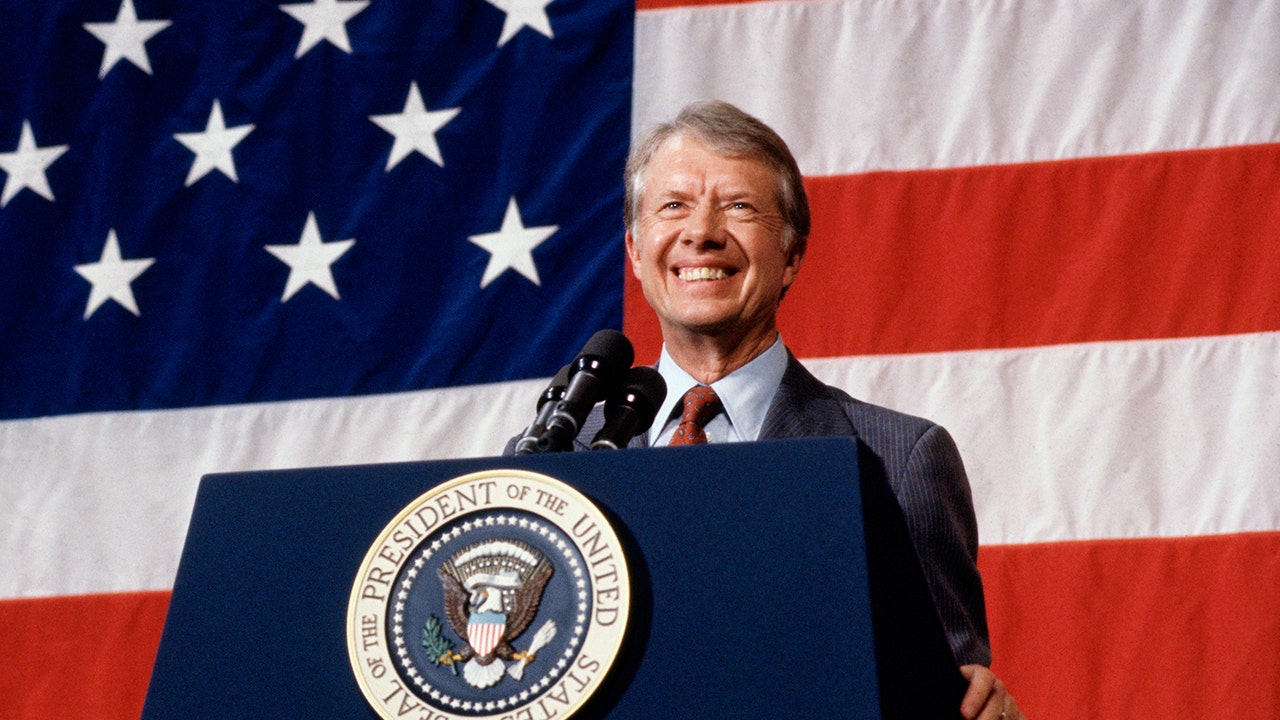
 Politics1 week ago
Politics1 week agoCarter's judicial picks reshaped the federal bench across the country
-

 Politics7 days ago
Politics7 days agoWho Are the Recipients of the Presidential Medal of Freedom?
-

 Health6 days ago
Health6 days agoOzempic ‘microdosing’ is the new weight-loss trend: Should you try it?
-

 World1 week ago
World1 week agoSouth Korea extends Boeing 737-800 inspections as Jeju Air wreckage lifted
-
/cdn.vox-cdn.com/uploads/chorus_asset/file/25822586/STK169_ZUCKERBERG_MAGA_STKS491_CVIRGINIA_A.jpg)
/cdn.vox-cdn.com/uploads/chorus_asset/file/25822586/STK169_ZUCKERBERG_MAGA_STKS491_CVIRGINIA_A.jpg) Technology2 days ago
Technology2 days agoMeta is highlighting a splintering global approach to online speech
-
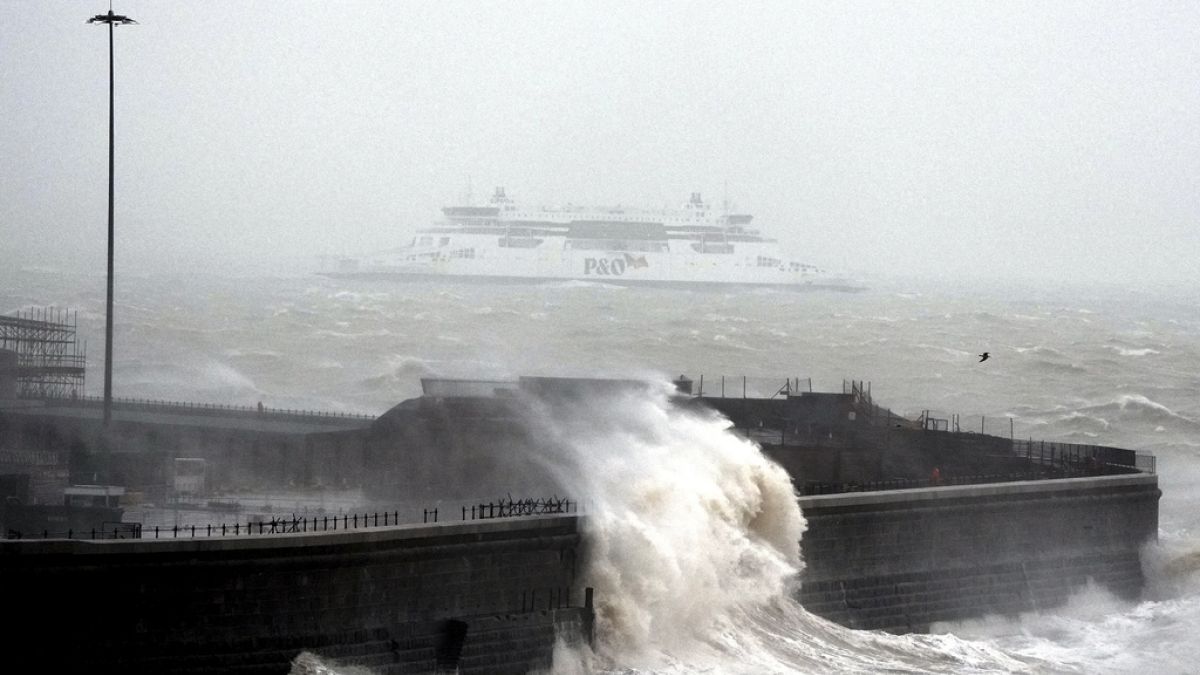
 World1 week ago
World1 week agoWeather warnings as freezing temperatures hit United Kingdom
-

 News1 week ago
News1 week agoSeeking to heal the country, Jimmy Carter pardoned men who evaded the Vietnam War draft




